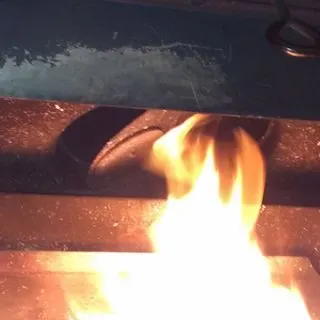A chimney flue is essential in conveying smoke and harmful gases from your fireplace to the outdoors. However, it can be a safety risk and an energy waster if not used properly.
Before lighting up that firewood, ensure the fireplace flue is open or else the smoke and gases will fill up your room. At the same time, if the opening of the flue is too wide after starting the fire, you end up wasting a lot of energy through convection.
You can check this too if you are into grilling and smoking.
Given the two scenarios above, it means you need to this opening accordingly, and you can do it through the damper. So, is your chimney flue closed or open? Here are simple techniques on how to tell if a chimney flue is open or closed.
Light up a fire
Start a small but smoky fire in your fireplace, say using papers or tinder alone. If the flue is open, the smoke will go out of the chimney without any problem. If the damper is closed, then the smoke will come out of the chimney and fill out the room.
Carry out a visual check
Check up into the chimney from your fireplace. You know the flue is open if you can see the sky or have a throat dumper. Otherwise, any barrier in the flue’s channel means it needs some unclogging. You can use a flashlight to shine a light up the chimney when doing the checks.
Check this too: Best air purifier for smoke under $100
Feel for the breeze
Another way to tell is by feeling the breeze. Place your hands inside your fireplace and pay attention if you can freely feel the air circulating. Air will be coming down the chimney.
Through the controls
The controls used in dampers may vary. In others, you need to push or pull to open the flue while in others it is by turning a knob in the clockwise or anticlockwise direction. Nevertheless, you can tell whether your damper is open or closed based on the position of the controls.
Knowing how to tell if the flue is open in your wood stove or fireplace can help retain the heat needed in your home. It can also save you from air pollution arising from smoke and other gases – unless you want to install a kitchen exhaust fan.

